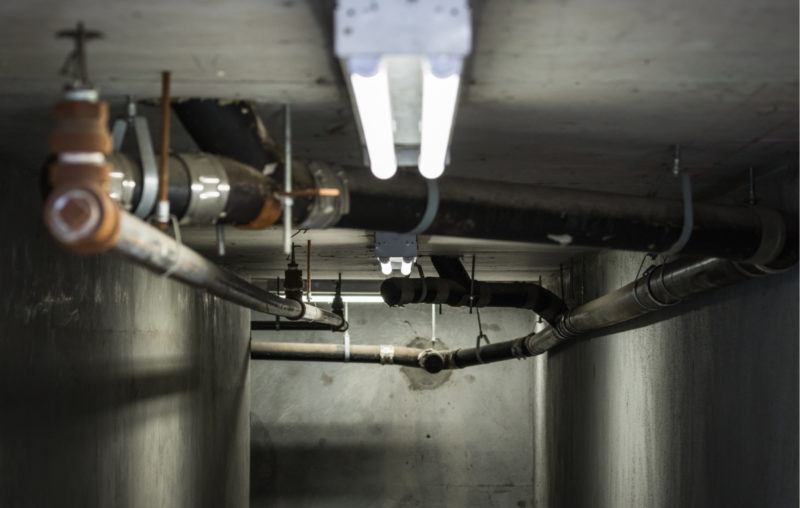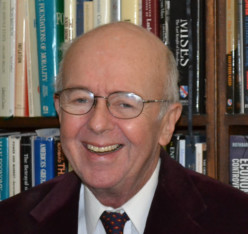An Economics Lesson on the Ceiling

I am a retired university economics lecturer. My students must have glanced at the classroom ceiling many times out of boredom or maybe something I said that sounded outrageous. Had they thought about what they saw up there, they might have learned a better economics lesson than what I was offering.
I’m talking about the fluorescent light fixtures that we all take for granted in school buildings, commercial buildings, hospitals, trains, etc. What could be more mundane, more easily taken for granted? In fact, there is an endless amount we could learn about the physics, engineering, and economics that make fluorescent lighting possible.
Let’s turn first to the physics of fluorescent lights. How is the light produced? It’s not so obvious as with an incandescent bulb whose glowing filament we can see. Here’s an outline; you can easily follow up starting at Wikipedia.
To understand fluorescent light you need to understand just a little about nuclear physics: that electrons can only orbit their nucleus in discrete energy levels. When an atom is bombarded by a sufficiently energetic external source its outer shell electrons jump temporarily to a higher orbit, and when they fall back down they emit photons (particles of light) at a particular wavelength.
Fluorescent tubes are filled with mercury vapor. An electrical current passes through the tube and the electrons in the current bombard the mercury atoms, knocking their outer electrons “upstairs.” As those electrons fall back they produce ultraviolet light. But UV light is not what we want. It’s not visible and at sufficient intensity it can be quite harmful. To get visible light, the insides of fluorescent tubes are coated with phosphor which absorbs the UV light and emits visible light.
Fluorescent technology has advanced a lot since the 1930s when General Electric made the first serious attempts to produce bulbs commercially. Questions for you to research: why do modern bulbs start instantly? Why don’t they hum like the old ones did? Why do they last so much longer?
Standard four-foot fluorescent bulbs are available for about $30 for a pack of four. Is that a fair price? A fair price is one that tends to balance supply and demand in a competitive market. Since there are many suppliers and demanders, $30 is very likely a fair price. When we ponder all effort and thinking that went into developing, manufacturing, and distributing the bulbs, it might be called an amazing price. Fluorescent bulbs were, after all, unavailable to Rockefeller or Carnegie at any price.
That observation raises the same question that Leonard Read asked about the lowly pencil in his classic piece “I, Pencil.” What motivates the thousands of people whose efforts are essential, directly or indirectly, to providing us with pencils or fluorescent bulbs?
Who manufactures the seamless glass tubes? How do they manage to make them safe, durable, and economical? How much profit margin do they enjoy, if any?
How about the short tungsten filaments inside the bulbs at each end? How is tungsten mined, transported, drawn into wires, and distributed?
Fluorescent bulbs must be evacuated to a tiny fraction of one atmosphere. How is this done safely and economically and how are the tubes sealed?
Bulbs come in standard sizes. The vast majority of commercial fixtures take bulbs that are four feet long, one inch in diameter, and fitted with standard end connectors. The market converged to this standard without in any way inhibiting competition among suppliers as to price, efficiency, spectrum and longevity.
Fluorescent bulbs have a lesson to offer about industrial policy, the idea that politicians and bureaucrats know best what industries should be getting our hard-earned savings. In fact, the track record of industrial policy is one of almost unbroken failure. Example: it was not long ago that we were told to switch to compact fluorescent bulbs. Oops, they’re almost forgotten now. That’s partly because it was too easy to break them and release toxic gas, and partly because LED lights are now available that emit full-spectrum light and are smaller and more efficient. (By the way, what is a diode? A light-emitting diode? Look it up!)
A word about efficiency, a standard engineering concept that actually rests on subjective values. Efficiency in lighting is defined as getting the most visible light per unit of power consumed. Incandescent bulbs fall far short by this measure and yet for me, they are 100% efficient during winter nights. How can that be? The heat they generate, normally regarded as waste, helps to heat my house, which has electric baseboard heating. Even the light that goes out the window isn’t wasted, as I see it, because it shows that the house is occupied. Efficiency means getting the most of what you want from what you have and although all of us often want the same thing, not always. (Warning: bureaucrats are making incandescent bulbs harder to find. Stock up!)
May I suggest that learning is its own reward and that curiosity points the way to learning. Whether you are a student or a senior citizen, be curious about the physics, engineering, and economics behind the everyday devices and systems that you depend on so heavily and take so much for granted. Of course, there isn’t time to research everything but with so many resources now available online, you can reward yourself by learning something new every day.










